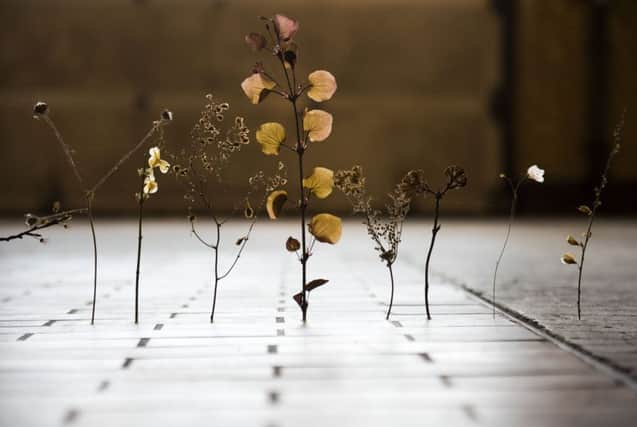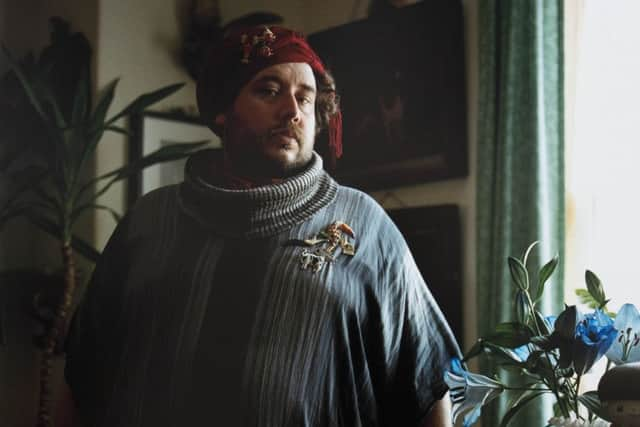Art review: ECA Degree Show 2017


ECA Degree Show 2017 Edinburgh College of Art ****
In these uncertain times optimism and high spirits are in rather short supply, but they overflow in ECA’s degree show. Things can’t be that bad if the young can show such high spirits. The catalogue this year includes pictures of them rather than of their work and they look a cheery lot, too. But their photos do underline the fact that three quarters are women. There are 85 graduating in the fine art courses, Painting, Sculpture, Photography and Intermedia and the balance, or imbalance, of the sexes overall is 67 to 18. While this is perhaps no cause for anxiety and it may not be a general trend, it does pose the question: why should art fall so far out of fashion with the men? Of course it was once the other way around, no harm in a corrective swing. Nevertheless, now we have discovered it, gender balance is usually a good thing.
The painters are by far the largest group and this year a lot of their work is just that, painting. Perhaps the pendulum is swinging back at last to the form of visual expression which has been primary since the caves. Drawing too, although it has long ceased to be the key discipline it once was, makes a good showing as the students find their own way back to it.


Advertisement
Hide AdAdvertisement
Hide AdAmong the most notable painters, Juanita Zaldua paints small pictures which record in exquisite close-up small areas of flaking plaster, peeling paint or other evidence of wear and tear in buildings, finding richness of texture and colour in unremarkable fragments of the environment. Julia Oborne’s work is more lush. She works with fluid paint to create abstract but organic-seeming shapes, made lively by the dynamic of her handling. Her work seems especially successful on a smaller scale. Ellie Lee on the other hand works on a large scale, creating what she calls non-literal landscapes in a rich and stormy abstract-expressionist mode. Appropriately she cites Helen Frankenthaler in her statement in the catalogue. (Given the opportunity to write something for their page most have thankfully avoided trying to describe their work in tortuous New Art Speak. Chiara von Puttkamer, for instance, is brief and to the point: “Art not words,” is all she says.) Kieran Mitchell’s paintings are very different. Apparently straightforward representations of rather bare rooms and staircases, they recall the moody, atmospheric work of 19th-century Danish painter Vilhelm Hammershoi. Alexandra Roddan has won two important prizes with her richly-textured paintings and Andrea Christodoulides’s work makes an equally striking show. She talks about narrative and her semi-abstract figures are certainly engaged in dramatic interaction, but we are not given a key to what the narrative is and perhaps we don’t need it. The drama is visual, the product of the flow of her inventive energy. Her inspiration seems to be Picasso, but that’s no bad starting point for an artist who clearly has ambition. Fionnuala Mottishaw’s creative energy is equally apparent in her weird and wonderful assemblages, their richly-coloured imagery composed from paint, wool, cloth, found objects, cut-out cardboard and much else.
Tess Glen’s obvious energy goes into drawing. The walls are covered in vivid, rapidly executed and often very funny drawings on scraps of paper, even on a broken tile and spilling out on to the walls themselves. Equally impressive, though for its discipline and restraint, not its runaway creativity, is Eleanor McCullough’s installation with dominant primary colours, famous paintings deconstructed to stripes of colour and great artists reduced to simple pots of paint. Edith Pritchett’s installation is a cheerful riot of more irreverent art-historical references.
India Cawley-Gelling’s work is also primarily drawing, creating out of line and pattern complex and intricate images where elements of the landscape outside her studio window evolve from descriptions of conventional space into something more like the flow of music, and this does seem to be her ambition. Anjila Wilson too begins with landscape, the landscape of Leith in fact, but takes a very different approach. She is a painter who makes things cast in bronze, ending up with what look like cannon balls, but getting there apparently through a complex process of soil analysis. Daisy Silver also starts with painting but ends up with sculpture. The College no longer has a ceramic department, but it does still have the facilities and so she has turned to highly-glazed ceramic to create an imaginary set of Minoan ritual figures – no matter that though the Minoans were great potters, they did not know how to glaze their pots.
Among the photographers, Paula Janik has created a remarkable body of work from what seem to be pictures of wire-reinforced glass windows. The abstract patterns of surface that she creates are bold and strong and would look quite at home among the work of the painters. Craig Waddell has created a powerful set of photographic portraits, while Fiona Steel has commemorated light aircraft crashes with evocative portraits of the crash sites.


In Intermedia, Adam Castle’s 20 minute film, simply called Entertainment, demonstrates a very professional standard of production. Holly Dickinson makes cardboard buildings and interiors which are a bit more interesting than Nathan Coley’s cardboard churches as rather wistfully they seek to encapsulate memories.
Among the sculptors, Clive Powell’s installation includes pots and pans, wooden barrels, unfinished musical instruments and other odds and ends, all to rather poetic effect. Chloe Milner has made effigies of stones, piled them up and then listed them as characters in a film, identified by the gird reference of their place of origin. The college, or now one should say the university, has recently taken over the fire station which shared its site, once Edinburgh’s cattle market. So far the building is just as it was, even to the smell of horses impregnated in the ground from the teams once stabled there for the horse-drawn fire engines of long ago. This year as the College is generally under pressure for space during major refurbishment, Sculpture has used the unmodified ground floor garage as part of its display space. Beth Hadshar has created a procession of little sculptured plants marching across the floor. It is as though nature was moving in to reclaim the ground in the name of the cattle and the horses whose territory it once was.
One of the best and most tersely focused shows, however, is by sculptor Lara Hirst. Economical, it is also about economics, or at least value, for she has worked variations on the theme of gold as its symbol. Much of it involves gold-coloured, but base metal pound coins. She has done various things with them. One in 30 coins is a fake, apparently, so she has displayed 30 including one fake. It’s made of real gold. But simplest and most impressive is a work in which she has taken three pound coins, melted them down and recast them as the three basic geometric shapes, cube, cone and cylinder. Beautiful in shiny golden miniature, they neatly invoke Cézanne’s famous dictum. Thus she confronts the shifting values of economics with the more permanent values of art.
Until Sunday 11 June